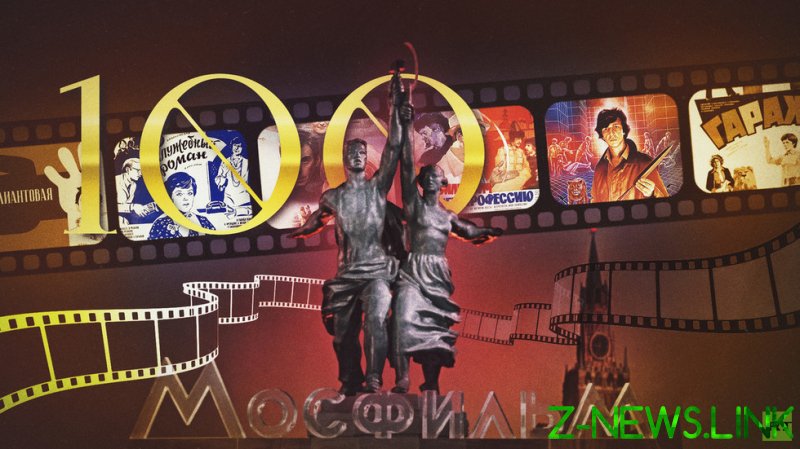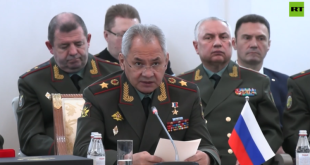
Mosfilm is not only Russia’s main and largest film studio; it’s the historical birthplace of Soviet and Russian cinema. This year, the film studio is celebrating its centenary. To this day, Mosfilm’s brilliant comedies make people laugh, the touching love stories make us cry, and philosophical arthouse films give food for thought. Below, we will explore the film studio’s history and highlight key events from the last 100 years.
On January 30, 1924, the film ‘On Wings Skyward’ was released in Soviet cinemas, and this date became known as Mosfilm’s “starting point.” It’s true that the film studio existed before the film’s release – and, in fact, the motion picture was shot there. However, in order to understand why this event has become associated with the establishment of Mosfilm studios, we must delve a little deeper into history.
The creation of Mosfilm studios
Film production in the Russian Empire goes back to the first years after the invention of the cinematograph. The very first films in Russia were made in the year 1896. In the next two decades, several film studios appeared. The largest ones were the Khanzhonkov and Ermolyev film studios – the two pre-revolutionary film companies that served as the basis for the future Mosfilm.
Soon after the 1917 Revolution – in 1919, to be exact, Soviet Russia nationalized all film production. Khanzhonkov and Ermolyev’s film studios were handed over to Goskino (the USSR State Committee for Cinematography) in 1922 and became known as the First and Third Factories of Goskino. They were located in different places, which made film production difficult. A year later, the factories were merged into a single film studio, and, in January 1924, the first film was released.
From the beginning, the film studio was quite busy. Sergey Eisenstein, Vsevolod Pudovkin, Alexander Dovzhenko, and other legendary film directors worked there. Eisenstein’s legendary film ‘Battleship Potemkin’ was released in 1925, while Pudovkin’s movie ‘The Descendant of Genghis Khan’ and Dovzhenko’s ‘Arsenal’ were released in 1928.
The film studio became known as Mosfilm only in 1936. In the first 12 years of its existence, the studio changed its name and even affiliation several times. In 1926, the factories were incorporated into the newly-established United Moscow Factory Sovkino, which was then renamed to Soyuzkino. Later, the name was changed once again – first to Soyuzfilm, and then to Moskinokombinat. It was only in 1936 that the studio got its final name – Mosfilm, which it is known by to this day.
The year 1931 was a key one for Mosfilm. At the time, the film studio moved to Lenin Hills (near the village of Potylikha) where a huge space for film production was built. As early as the second half of the 1920s, filmmakers proposed a project to create a large “cinema town” for film production. Sergei Eisenstein and Grigory Alexandrov traveled to the USA and were impressed by Hollywood. In fact, the concept of Hollywood as a single filmmaking center served as an example for the Mosfilm pavilions.
The construction of the new film studio began in 1927 and the grand opening took place in the beginning of February 1931. The pavilions spread over an area of 4,500 square meters. In the course of the design process, all the details were taken into account that would ensure a complete film production cycle under a single roof.
The Golden Age
The 1930s can be rightfully considered the “golden age” of Mosfilm. In this pre-war decade, many great films, which established the traditions of Soviet and Russian cinema, were made. Directors implemented new ideas and surprised audiences with new techniques; new film genres appeared and the first stars of Soviet cinema were born.
Sergei Eisenstein and Vsevolod Pudovkin worked in the genre of historical cinema. Eisenstein’s film ‘Alexander Nevsky’ and Pudovkin’s ‘Suvorov’ and ‘Minin and Pozharsky’ became classic examples of the historical genre. Meanwhile, Grigory Alexandrov established the genre of Soviet musical comedy with his films ‘Jolly Fellows’, ‘The Circus’ and ‘Volga-Volga’. Lyubov Orlova, who starred in these films, became the country’s favorite actress. Aleksandr Ptushko directed the fantasy films ‘The New Gulliver’ and ‘The Golden Key’, which appeared quite magical at the time – the actors interacted with puppets, which was made possible by combining stop-motion animation with live-action footage.
In the pre-war period, Mosfilm created many classic movies. The studio was known for innovation, technical progress, and great film stars. In many ways, the ‘30s at Mosfilm resembled the golden age of Hollywood, when cinema was still a magical and unforgettable experience for audiences, and when the actors became stars overnight. During these years, Lyubov Orlova, Faina Ranevskaya, Rostislav Plyatt, Nikolai Cherkasov, Marina Ladynina, Nikolai Kryuchkov and many other stars rose to fame.
The war
The history of Russia and the USSR is inextricably linked with WWII. The war divided the country into “before and after,” and this was noticeable in all aspects of life. Taking a look at Mosfilm’s filmography, we can see how the atmosphere in the country changed, how filmmakers adapted to the times, and how this historical era was reflected on screen.
The war years were very difficult for Mosfilm, as well as for the whole country. In September 1941, many enterprises were evacuated from Moscow, including film companies. In October, a special train transported the studio staff, as well as props and costumes to Alma-Ata (the capital of Kazakh SSR at the time). The Central United Film Studio of Feature Films was temporarily established in Alma-Ata. This studio continued shooting films, many of which made it into the golden collection of Russian cinema.
It is hard to imagine the challenges associated with shooting films in wartime conditions. There was a severe shortage of film stock, equipment, space, and electricity. The same sets were reused for different films, electricity had to be saved – which complicated the work of lighting specialists – and filming time was limited.
Nevertheless, many movies that are still popular today were released at the time. The filmmaker’s most important task was to raise and maintain morale. The first war films were shot, such as ‘The Invasion’, ‘Six P.M.’, and ‘Fascism will be defeated’. At this time, Eisenstein also began working on what was to be his last film, ‘Ivan the Terrible’. Considering the conditions in which it was shot, the movie still astonishes viewers today. Actor Nikolai Cherkasov’s portrayal of the Tsar became a reference point and an example for all subsequent onscreen representations of Ivan the Terrible.
Post-war years and the first crisis
The post-war years were very difficult for Mosfilm. According to the studio’s official website, 22 films were shot in 1946, and 18 were shot in 1948. In 1951, only seven films were made, and only three of them were feature films. This situation was brought about by changes in domestic policy: The second wave of Stalinist repressions affected the film industry. The General Secretary voiced Lenin’s principle of “Let’s do less, but better,” at the same time demanding greater incomes from film production. Many of the studio’s films were censored – for example, the second part of ‘Ivan the Terrible’ was banned.
This was also when the idea of creating a big Mosfilm studio was first proposed. It implied the large-scale reconstruction of the film studio, the construction of new facilities, and the purchase of new equipment. However, this plan was implemented only in the second half of the ‘50s, since the initial project was so enormous in scale there were not enough resources for its implementation. The idea was shelved, and the film studio had to fight for its survival.
The ‘Big Mosfilm’
Things changed with the death of Stalin in 1953, when it was decided to considerably expand movie production. Mosfilm started operating again, and, in 1954, Ivan Pyriev was appointed director. He retained this position until 1957, and, in this short time, managed to implement the “Big Mosfilm” project. The original plans were abandoned, since they were too grand, but the film studio was considerably renovated. Two blocks of new pavilions, a sound studio, and a separate building for the decorative and technical department were built. Pyriev refused to decorate the studio’s buildings and interiors and instead invested the money into technical equipment. By the mid-’50s, Mosfilm started shooting wide-screen color films. Under Pyriev’s leadership, Mosfilm increased production to 40 films per year. The “Big Mosfilm” concept had fully justified itself.
First awards
After WWII, soviet cinematographers began to explore new film genres. While the studio still made musical comedies, films about socialist construction sites and movies on other popular ‘30s themes, filmmakers gradually transitioned to more personal themes. They explored everyday situations and personal experiences, and their stories didn’t always fit a certain “global union” agenda.
War films became the most important achievement of Soviet filmmakers. Soviet war films are a separate movie genre, one that stands apart from foreign films on the same subject. In Soviet films, the war is seen through the prism of ordinary people and their drama. Many war films do not even have any war scenes. Instead, they focus on how the tragedy of war affected the lives of ordinary people. One of the most important and groundbreaking movies in this respect was Mikhail Kalatozov’s ‘The Cranes are Flying’, which was released in 1957.
The film earned a Palme d’Or at the Cannes Film Festival and caused a sensation at the festival, becoming a huge box office success in France. Incidentally, French filmmaker Francois Truffaut – who admitted to watching this film many times – had a large say in acquiring the distribution rights for it in France. The movie was also one of French director Claude Lelouch’s favorite films. Today, it is recognized as a masterpiece and a textbook example for young filmmakers.
While ‘The Cranes are Flying’ set the stage for a new wave of war films, two other Mosfilm movies completely transformed this genre: Grigory Chukhray’s ‘The Ballad of a Soldier’, released in 1959, and Andrey Tarkovsky’s full-length debut film ‘Ivan’s Childhood’, released in 1962. Tarkovsky’s film became the first Soviet movie nominated for an Academy Award in the Best Foreign Language Film category. However, it was not this motion picture but another that earned Russia its first Oscar.
International recognition
The Soviet filmmaking industry extended far beyond Mosfilm. There were many large film studios across the country, such as Lenfilm, Gorky Film Studio, Odessa Film Studio, and many others. However, in the Soviet period, only movies produced by Mosfilm won major international awards, such as the Cannes Palme d’Or and three Academy Awards.
Sergei Bondarchuk’s epic film adaptation of Leo Tolstoy’s novel ‘War and Peace’ earned Soviet Russia its first ever Academy Award. It took Bondarchuk six years to make the film– he worked on it from 1961 to 1967. The movie is divided into four parts, with the first one consisting of two episodes. Its total duration is over six and a half hours. In fact, today the movie would be called a mini-series. But, in 1969, it won the Oscar for Best Foreign Language Film. Nowadays, this would be practically impossible, since, as a series, it would only be nominated for a Golden Globe. But, in those years, the film made a huge impression on members of the Academy.
The second Oscar was given to the joint Soviet-Japanese film ‘Dersu Uzala’ made by the legendary Japanese filmmaker Akira Kurosawa in 1975. At the time, Kurosawa was already considered a living legend and released masterpieces such as ‘Rashomon’, ‘Seven Samurai’, ‘Yojimbo’, ‘The Idiot’, ‘The Lower Depths’, and ‘Dodes’ka-den’.
The film is based on a novel by renowned traveler and Far East researcher Vladimir Arsenyev, who recounts a trip to the Ussuri region and his friendship with the taiga hunter Dersu Uzala. Incidentally, Kurosawa was first offered to make a joint film in 1971. Russian film director Sergey Gerasimov proposed the idea to Kurosawa during a trip to Japan, which he quickly agreed to. Initially, he wanted to make a screen adaptation of Gogol’s ‘Taras Bulba’ or of Dostoevsky’s ‘Notes from a Dead House’, but these attempts were unsuccessful. Finally, he selected this theme. The film earned both Mosfilm and Kurosawa – who had previously received an Academy Award for his masterpiece ‘Rashomon’ – their second Oscar.
The third Academy Award was awarded to the extremely popular romantic drama ‘Moscow Does Not Believe in Tears’, directed by Vladimir Menshov. The story of Katerina Tikhomirova – her career journey from a simple factory worker to director, her challenges of raising a child on her own after a bitter breakup, and her love for a tool-and-die maker at a research institute – was a great success. The movie resonated with audiences all over the world, regardless of the country’s political and economic system. ‘Moscow Does Not Believe in Tears’ was released in February 1980, and in 1981 it won an Academy Award for Best Foreign Language Film.
Mosfilm’s legacy
For three decades – from the 1960s up until the first half of the 1980s – Mosfilm was at its peak. During these years, the Soviet cinema industry thrived. Dozens of films were made each year and new genres appeared, such as animation films, TV shows, and documentaries.
Nevertheless, Russian cinema has become almost synonymous with Mosfilm, its intro showing the ‘Worker and Kolkhoz woman’ statue by sculptor Vera Mukhina, and the national and international film awards won by the studio. In addition to making award-winning films, the studio also shot movies that earned the love of millions of Russian people – for example, Leonid Gaidai’s comedies (‘Operation Y and Shurik’s Other Adventures’, ‘The Diamond Arm’, ‘The Elusive Avengers’, and its sequels), masterpieces by Eldar Ryazanov (‘Beware of the Car’, ‘The Irony of Fate’, ‘Garage’, ‘Office Romance’), Nikita Mikhalkov’s movies (‘At Home Among Strangers’, ‘A Slave of Love’, ‘Family Relations’) and countless other films that came to represent the ‘mysterious’ Russian soul, its culture and rich heritage.
Mosfilm today
The collapse of the USSR strongly affected Mosfilm. In the ‘90s, the studio no longer made 40 films per year, as it had done just a few years earlier. The country faced difficult times, and so did Mosfilm. However, its caretakers were able to preserve its legacy and prevent the film studio from going into private hands.
In 1989, the studio became part of the State Creative Production Association Mosfilm. Vladimir Dostal, who served as the director of Mosfilm from 1987 to 1998, was able to preserve the studio’s production base and its intellectual property. He was aided by film veterans Sergei Bondarchuk, Vladimir Naumov, Georgy Danelia, as well as some younger but already renowned film directors, such as Sergei Solovyov, Vladimir Menshov, and Valentin Chernykh. During the most difficult years, Mosfilm proved to be the most economically stable film company in Russia, and it still holds the rights to its great collection of films.
In 1998, Karen Shakhnazarov became the new director of Mosfilm, and he heads the studio to this day. In the 2000s, the studio underwent large-scale modernization. Today, Mosfilm is equipped with the latest technology and is able to shoot films that fully comply with modern technical standards.
By Dmitry Kuzmin, a Russian movie critic and contributor to one of the country’s top streaming services
© 2024, paradox. All rights reserved.





